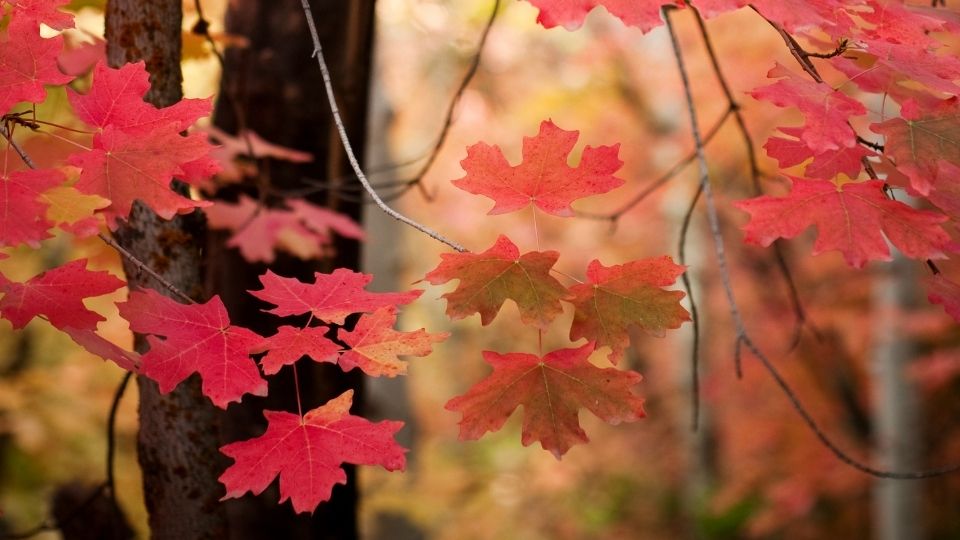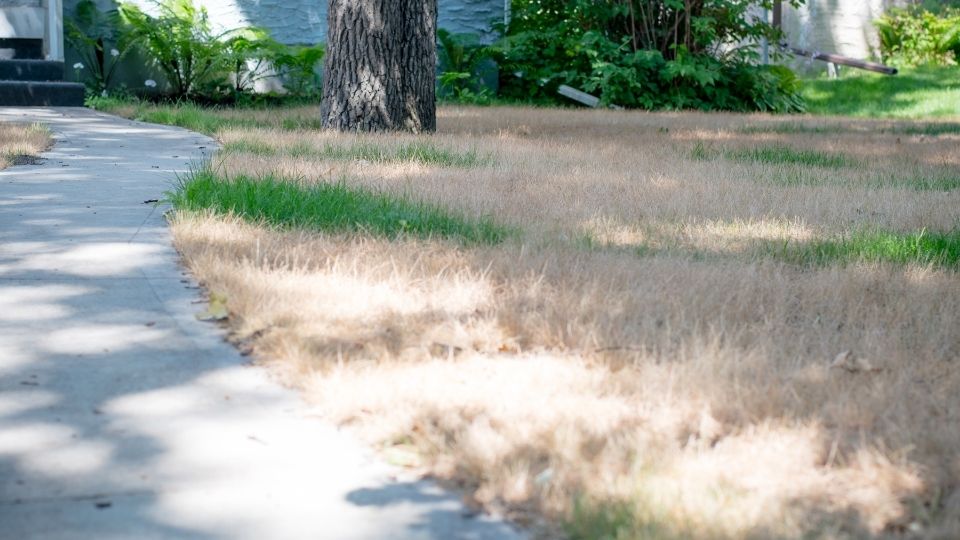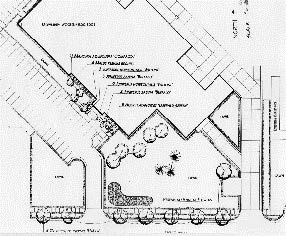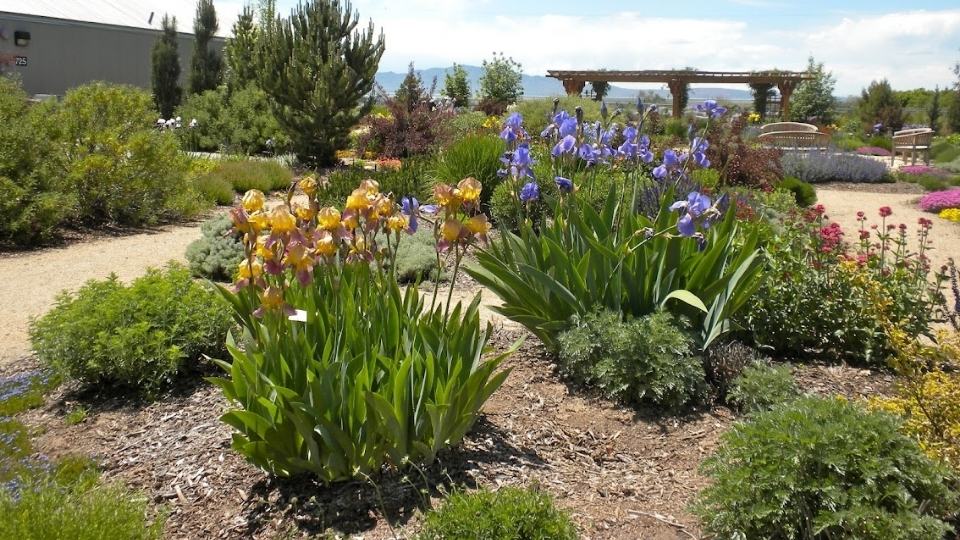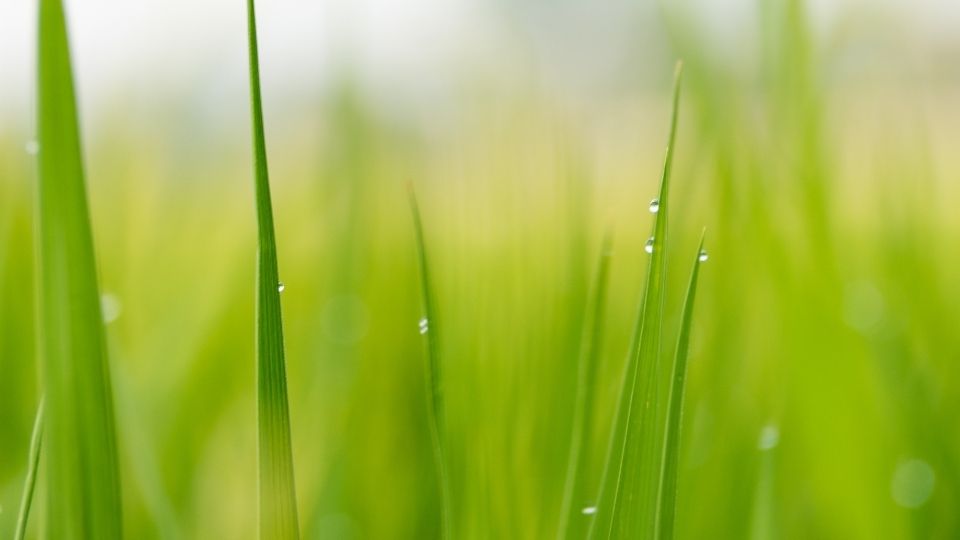Water-Wise Landscaping: Ideas for Landscape Water Conservation Without Changing Your Landscape Design
Amenity landscapes in Utah use a large portion of the state’s treated potable water. Not only can this cause a shortage of water necessary for human consumption and other uses, but it can also be expensive for homeowners. The good news is that there are many ways to conserve water without changing your existing landscape design. Here are some ideas for improvements that don’t require changing your trees, shrubs, flowers, or lawn.
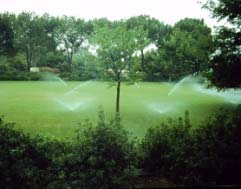
mixed on the same zone result in non-uniform
irrigation.
Avoid mixing different types of sprinkler heads on the same zone
Rotary heads have a solid stream of water that rotates back and forth across the landscape, while spray heads cover the entire spray pattern with a constant stream of water. Spray and rotary heads should not be mixed in the same zone. Drip irrigation systems should also not be mixed on the same zone with other sprinkler types. If different types of sprinklers are mixed on the same zone it will result in the over irrigation of one part of the zone and under irrigation of another part. (Figure 1.)
Changing out sprinkler heads to more efficient models
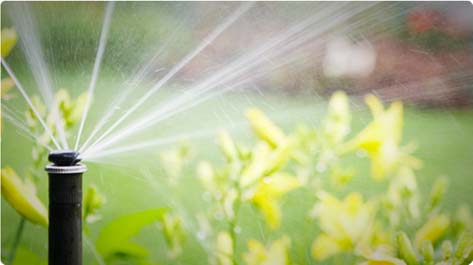
this one should all match within a zone.
(Photo courtesy of Hunter Industries.)
There are many options available for sprinkler heads and nozzles and some of these are better at watering evenly than others. Consider replacing inefficient sprinkler heads or nozzles with more efficient products. Rainbird RN™ series nozzles or Hunter MP™ rotator nozzles are just two of the choices of high efficiency nozzles available to consumers (Figure 2).
Changing out nozzles and sprinkler heads can usually be done without a major overhaul of the existing sprinkler system. Generally most sprinkler nozzles will simply unscrew and the new nozzles can be screwed into the head. Alternatively, entire sprinkler heads can usually be replaced by unscrewing the head from the pipe attached to its base and replacing it with a new one. When replacing sprinkler heads or nozzles all should be replaced with identical models within each zone. Each brand, head, model, and nozzle puts out varying amounts of water. For an irrigation system to water as efficiently as possible all heads and nozzles in a zone should be the same.
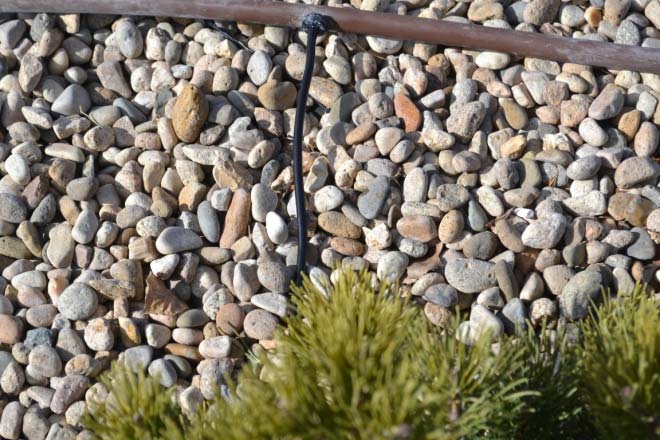
main line with tubing extending to the plant.
Efficient sprinkler heads and nozzles can save surprisingly large amounts of water over time. The most significant limitation to the effectiveness of swapping out sprinklers and nozzles for more efficient models would be a poor original design. For example, if the sprinklers were not spaced the right distance apart then changing out sprinkler heads will not necessarily give you a more efficient irrigation system. In this situation the spacing of the sprinklers would also need to be adjusted to create a system that waters uniformly. Sprinkler heads and nozzles are only as good as their placement in the landscape.
Installing drip systems in flower and landscape beds
Drip systems place water directly in the soil. This reduces evaporation and also puts water exactly where the plant needs it. (Figure 3).
Drip irrigation can also reduce plant diseases because moisture from irrigation never contacts the leaves of the plant. Because there is little to no water applied to the open areas between desirable plants, there is also less opportunity available for weeds to use any excess water to grow. A properly installed drip system is one of the most effective and efficient ways to water perennial beds in a landscape.
Conveniently, it is possible to retrofit conventional sprinkler systems to drip irrigation systems with only minor modifications. This is done by modifying conventional sprinkler heads with adapters that allow either ¼″drip tubing or a ½″ drip mainline to be attached. Drip tubing and emitters can then simply be extended from the converted sprinkler head adapter or drip mainline to the surrounding plants (Figures 4 & 5).
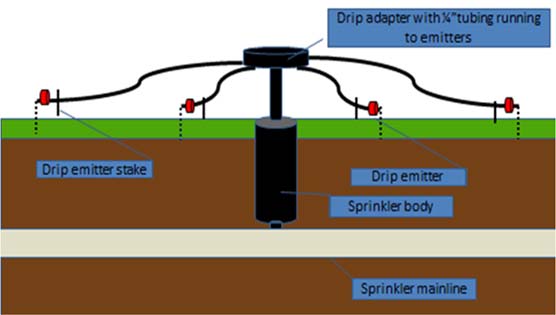
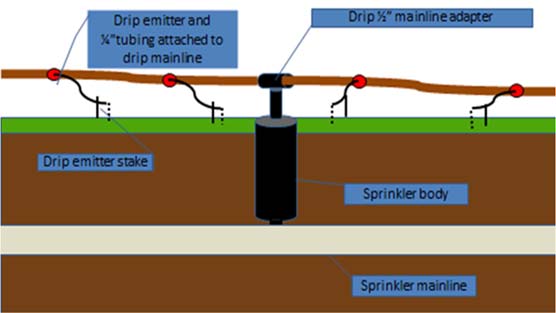
Covering bare ground with mulches
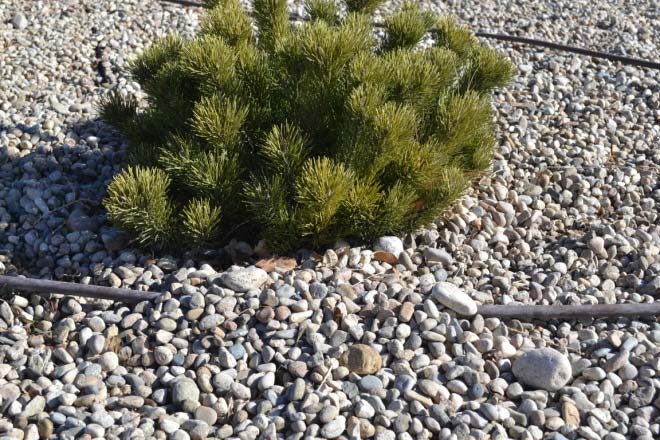
to improve aesthetics.
Covering bare ground with mulch helps reduce evaporation of water from the soil. This gives plants the opportunity to utilize the water in the soil before it is evaporated into the air. Mulches can also be used as a weed barrier. Competition from weeds reduces the amount of water available for desirable plants to use. When selecting a mulch it is important to keep in mind that some mulches require more maintenance than others. For example, a rock mulch does not need to be replaced as often as bark mulch. However, rock mulches are usually significantly more expensive than bark mulches. Another benefit of mulches is that if drip tubing is being used the mulch can cover up the tubing making the landscape more aesthetically pleasing (Figure 6).
Changing to drought tolerant grass varieties
There are many different kinds of turfgrasses, and they require different amounts of irrigation to maintain an attractive lawn. Warm-season grasses such as buffalograss and blue grama, and coolseason grasses such as tall fescue, fine fescue, perennial ryegrass, are all options for turf areas that use less water while still maintaining their aesthetic appeal. Kentucky bluegrass, when irrigated correctly, may still be a good landscape choice. As a cool-season grass, it is especially attractive in the spring and fall. Each grass has its own advantages and disadvantages. Warm-season grasses green up later in the year than the cool-season grasses. However, they stay greener in the heat of the summer. Cool season grasses green up early in the spring, but tend to go dormant during the heat of the summer.
For a lawn that receives a lot of traffic, many of the drought tolerant grasses simply will not perform as well as Kentucky bluegrass. In these situations efficiently watered Kentucky bluegrass is still a good option. When choosing a turfgrass, it is important to keep in mind the function that the grass serves in order to pick the type of grass that best meets the landscape’s needs.
Using smart irrigation controllers for sprinklers
Many types of smart irrigation controllers are available to consumers. Smart controllers use realtime weather data to control irrigation systems. They do this by using weather data for specific neighborhoods or communities to calculate evapotranspiration (ET) rates. Evapotranspiration is a measurement of how much water the landscape requires based on the temperature, wind, and several other factors. The weather data is interpreted and then transformed into a watering schedule for the landscape by the controller. This is all done automatically so that the sprinkler timer does not have to be manually programmed as the season progresses. These types of irrigation system controllers offer a convenient way to water landscapes efficiently, without having to constantly adjust the sprinkler controller manually.
Remember, a smart controller can only be as effective as the irrigation system it is running. A controller can’t make a system better than it is if the system does not water uniformly to begin with. It can only adjust the irrigation schedule. When using these types of controllers it is still important to check sprinkler system and the landscape regularly to make sure that things are functioning properly and that plants are being appropriately irrigated.
Aerating lawns annually
Aerating lawns improves water infiltration and reduces the likelihood of water running off. It also reduces soil compaction allowing water to soak into the soil faster and more evenly, maximizing the ability of soil to store water.
Determine soil texture
Soil tests can be used to determine the soil texture, (the amount of sand, silt, and clay). This information can then be used to determine how often and how much water needs to be applied each time a landscape is irrigated. Soil tests can also indicate whether important plant nutrients are lacking. For more information on soils and how soils affect landscape irrigation visit: http://www.ext.colostate.edu/mg/Gardennotes/263.pdf
Controlling pressure with booster pumps or pressure reducers
It is important for an irrigation system to run at the water pressure range for which it was designed. Too much water pressure and sprinklers will not water evenly and will form a mist that is easily evaporated or blown off target by wind. Too little water pressure and sprinkler head to sprinkler head coverage will not be achieved, which means some areas will receive less water while other areas will receive more. There are various pressure testers available for sprinkler systems.
However, just watching sprinklers run can often indicate whether there is a water pressure issue. If nozzles are misting fine particles when the sprinklers are running, the water pressure is probably too high. If a full stream is not coming out of the nozzles, they look like they are not spraying as far as they should, or the sprinkler heads are not popping up all the way, it is likely that the water pressure is too low. To remedy too high of water pressure, a pressure reducer should be installed on each zone of the sprinkler system. Generally these are inexpensive and can be installed either by a professional or a homeowner.
Low water pressure is a much harder problem to solve. However, it can be dealt with in several ways. The first would be to install a booster pump. A booster pump raises the pressure of the system to the optimum operating pressure. In some situations this might be the only way to remedy a low pressure problem. However, a booster pump can be expensive to purchase and install and usually requires professional installation. There are several other options for remedying low pressure which include using heads and nozzles that are designed to run at the lower pressures such as Rainbird’s high efficiency HE-Van nozzles, or reducing the number of sprinklers per zone (if there are too many for the pressure and volume available). Sprinklers which are designed to run at lower pressures can still maintain uniformity even when pressures are too low for normal operation of standard sprinkler heads.
Redesigning sprinkler systems to have head to head coverage
In some situations it may be necessary to redesign the whole sprinkler system. For example, if sprinklers are spaced incorrectly, no amount of retrofitting will improve efficiency. Instead, part or all of the existing sprinkler system may need to be replaced or renovated. Such a change can be expensive, but may be the best way to conserve water and save money in the long term.
Controlling weeds
Controlling weeds is also a good way to conserve water in a landscape. Just like desirable landscape plants, weeds also use water. Controlling weeds in the landscape can help to save available water for desirable landscape plants.
Photography by Roger Kjelgren, Larry Rupp, and Kyle Frandsen.
Published March 2015
Utah State University Extension
Peer-reviewed fact sheet
References
- MP Rotator. (n.d.). Retrieved January 9, 2015, from http://www.hunterindustries.com/irrigationproduct/nozzles/mp-rotator
Authors
Kyle Frandsen and Larry Rupp
Related Research


